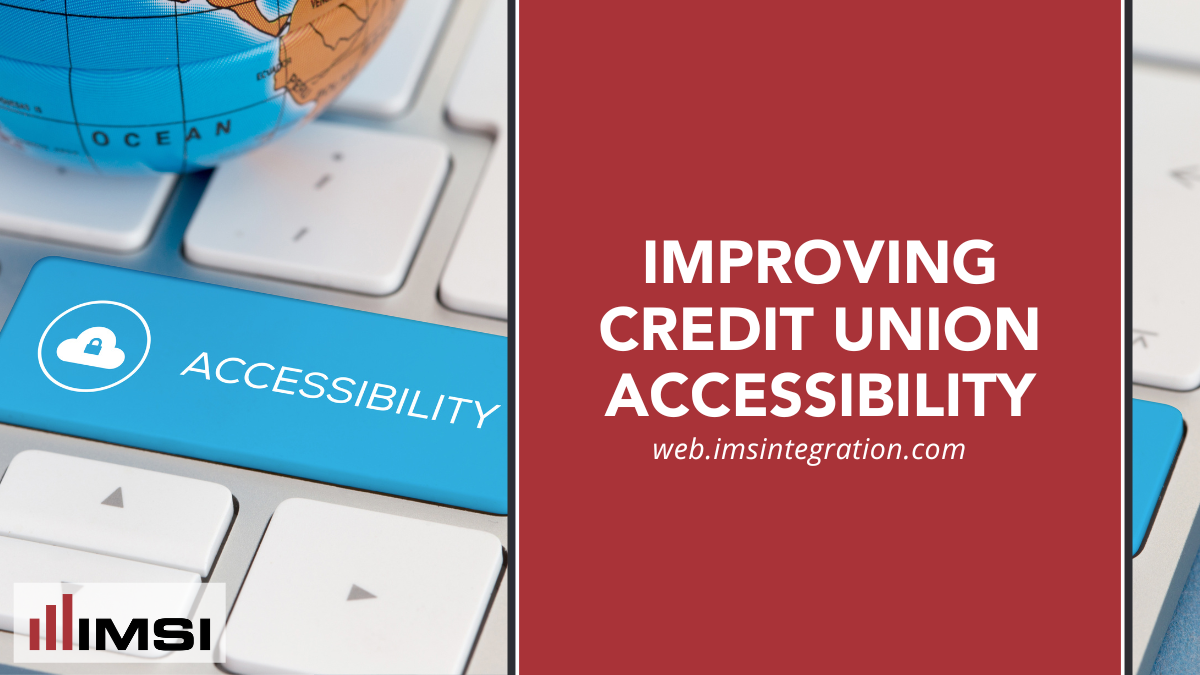The more we connect our businesses and credit unions with patrons and members, the more we realize the complexities of each of their lives and experiences with our brand. That’s why improving credit union accessibility should be a top priority for your physical branches and your digital assets this year.
Credit union accessibility is beneficial to everyone, not just those who struggle with disabilities. The more barriers you remove when it comes to your members accessing information and resources from your CU, the more they’ll want to use your products and services in the future.
We live not only in an age of diversity, but one of convenience. And quite often, organizations must anticipate and remove these barriers before their members ever encounter them. Here are some tips for improving credit union accessibility.
Website Accessibility
We’ve talked a little bit before about the importance of ensuring credit union website accessibility. And the optimization and functionality of your credit union’s website have never been more important than in this post-pandemic, tech-driven landscape.
The NAFCU has a great article that outlines the latest guidance from the Department of Justice (DOJ) regarding website accessibility. The article includes common areas and website programs that create accessibility barriers. These items include things like poor color contrast, content where color is used as the primary means for explaining something – imagine a colorblind user trying to decipher a color-coded pie chart, graph, or infographic for example – lack of alt text on images, videos with no captions, and mouse-only navigation.
Online Forms
Online forms are another area of difficulty for many people with disabilities. If your forms are slightly inconvenient for you or for other abled staff members, then it will be even more difficult when a credit union member with a disability attempts to use them. User experience is a growing area of concern for many websites, as it’s now often the primary way their members and customers are interacting with their brand, products, and services.
IMS Integrations Online Self Service forms are designed to be customizable and integrated solutions to help you collect the information you need from your members in order to process their requests and help then with their online banking needs. We’ve got forms for a wide array of products and services, like check reorders, HELOC adjustments, information requests, lost card notifications, and much more.
Listen to Your Members
Though the DOJ shared some helpful guidelines for increasing website accessibility for your credit union members, it’s important to remember that they are still just guidelines. Websites aren’t all built the same. Many were built from templates or through third-party hosts, and others were customized and built from scratch for your credit union specifically.
Creating narrow, pointed rules for how these websites should look, feel, and operate is impossible. And given the rate at which things change in web development and other digital fields, that won’t be changing.
So, what can you do to ensure that you are giving your members the best experience possible? Ask them! Reviews, feedback forms, and “Contact Us” pages are a great place to start. When things aren’t working for your members, you can bet they’ll take to the world wide web to share their feelings about it.
And when they start talking, make sure you listen. Your brand as a credit union hinges on the loyalty of your members and your reputation as a business. By listening to the concerns of those who are using or wish to use your online resources, you can tailor the experience to fit those needs.
Get in the Habit of Perpetual Optimization
As we said, technology is constantly changing. What may have been the best tool for helping visually impaired credit union members navigate your site last year may have been replaced with newer, better tech this year.
You will still encounter problems with members who are uniquely disabled or wholly uneducated in the finer points of technology and website optimization. However, it’s much harder to try and change a website after it’s built or reworked than it is to move through your next website project with credit union accessibility towards the top of your priority list.
The accessibility of your credit unions and their websites is not only important for legal reasons, but for representation and reputation reasons as well. The more groups of different people you can cater to and provide optimized banking technology to, the more you will find your member engagement and new member numbers growing.
Accessibility through Tech-Based Credit Union Solutions
IMSI offers a handful of elegant, member-facing web solutions that can help drive credit union accessibility in your branches and communities.
From online self service forms to trial balance and online courtesy pay, our solutions are made with your credit union members in mind, and your staff’s ability to easily integrate these new programs into your existing business operations.
If you’d like to learn more about these and other credit union solutions, request a consultation today.




